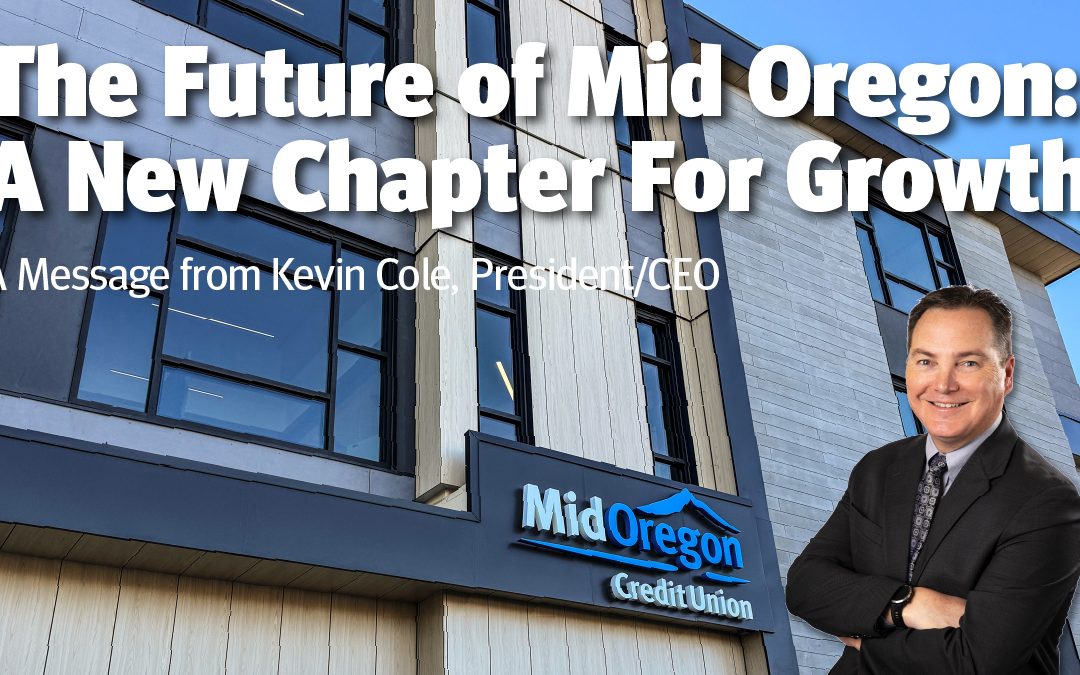The Bottom Line
Small business is important to Central Oregon, and to Mid Oregon. Find tips and resources for business, and information about Mid Oregon’s commercial services and business members.

FBI Warning: Your Browser Extensions May be Stealing from You
When the FBI releases an urgent warning to three million Chrome users, it’s time to pay attention. The alert warns malicious file conversion software, and their fake URLs, are hijacking personal information. It’s also at a time when malicious browser extensions and the hackers behind them are threatening Google Chrome users everywhere.
Convert with Caution
File conversion is a common tool used to change file formats, like changing a .pdf to a .docx file, or the reverse. The FBI says cybercriminals worldwide are creating websites hyping free file conversion services or free software downloads to convert files on your own. Their warning also finds victims are told MP3 or MP4 download might also being used. But what’s really going on is rarely known to a victim who learns their identity has been stolen—and they have no clue how it happened.
“Scraping” is a big part of this cybercrime. Scraping happens when a victim sends files for conversion and the cybercriminal on the other end scrapes them for all the sensitive PII they hold. Jim Stickley, CEO of Stickley on Security warns “Free software downloads for file conversions may work as advertised. What you don’t know is the download can install malware, take remote control of your device, monitor your financial transactions, or install ransomware. Browser vulnerabilities, like zero-day exploits, are also exploited by the crooks, so do your homework before you act.”
Be on the Lookout
Here are just a few of the 16 compromised browser extensions removed by Chrome: Adblocker for Chrome, Video Effects for YouTube and Audio Enhancer, and Super Dark Mode and Emoji Keyboard Emojis for Chrome. For a complete list, check the FBI Denver Field Office website. The Denver Office also says file scraping steals PII (Personally Identifiable Information) like Social Security numbers, date of birth, phone numbers, banking and cryptocurrency information, and passwords and email addresses are also hijacked.
The advice to Google Chrome users is stay away from using extensions whenever possible (especially those you don’t really need). If you’re not sure, shut the extensions off in Chrome and if you find you don’t need them, delete them.
Using “free” anything found online means it may have a hefty price tag. So, beware your online travels, lose extensions you don’t need, and don’t include “free” in your web searches.
Your Safety at Mid Oregon
As a reminder, Mid Oregon will NEVER ask for your Digital Banking credentials, PIN, SSN, full card or account numbers, or any other sensitive information. Stay safe!
For more tips on protecting your personal information, visit Mid Oregon’s Security and Fraud Page: https://ow.ly/hjHm50V9XE1.
Content provided by Stickley on Security.

Hi Mom, I Lost My Phone: The text scam that could empty your bank account.
What happens
Your phone alerts you to a new text. You pick it up and it’s a text from an unknown number that says, “Hi Mom, I lost my phone. Text me back at this number.” You’re perplexed. What do you do? Well, you stop right there. Why? That message probably isn’t from your kid. It’s part of a scam that’s been making the rounds for a while, and unfortunately, it’s still working.
Common Tricks
A common one goes like this: “Hi mom my phone broke. Can you text me back please on this number +1XXXXXXXXX.” There are variations on the text wording, but it is usually all a similar message including a lost phone. It might also arrive via another text app, such as WhatsApp.
Here’s how it plays out: Scammers send out messages pretending to be a child who’s lost their phone and now needs help. Of course, it’s usually money they want. Once you text them back, they start the ruse. It could be any number of wants, but they try to tug at your heartstrings, asking for urgent help paying a bill or buying a new phone, and then provide payment details that go straight into the scammer’s pocket. And by the time you figure it out? They’re long gone.
So how do you protect yourself?
- Don’t respond right away. Call or text your child’s real number first—even if you think it’s possible that the phone truly is lost.
- Never send money or gift cards without independently verifying who you’re really talking to. Don’t use a phone provided in a text or email unless you are 100% sure it’s legit. Frankly, if they’re asking for gift cards or crypto, it’s most likely some type of scam.
- Talk with your family and set up a “code word” you can use in case of real emergencies. This is also helpful for those ever-growing AI scams.
Bottom line: Scammers count on urgency and panic. Stay calm, verify everything, and don’t let a fake message break your bank account.
For more tips on protecting your personal information, visit Mid Oregon’s Security and Fraud Page: https://ow.ly/hjHm50V9XE1.

The Future of Mid Oregon: A New Chapter for Growth
Your Voice, Our Future: An Important Vote for Mid Oregon’s Next Chapter
I am excited to announce an important proposal that will help shape the future of Mid Oregon. On October 10, we will hold a Special Meeting to discuss converting Mid Oregon from a federal credit union to an Oregon state-chartered credit union.
This strategic move is designed to enhance your credit union experience and strengthen our position in the communities we serve.
WHY THIS MATTERS FOR YOU
- Expanded Growth Opportunities: A state charter enables us to grow beyond the Central Oregon market, offering our members better value, competitive products, and enhanced services.
- Modern Governance: The conversion promotes modern governance, helping us attract top-tier directors for our complex operations.
- Greater Flexibility & Parity: We gain expanded authority under the Oregon charter while retaining benefits of our federal charter through state “parity provisions.”
ARE THERE ANY DOWNSIDES?
- We do not anticipate any disadvantages or adverse changes to the services and benefits you currently receive as a member.
- Your accounts will continue to be insured by the National Credit Union Share Insurance Fund (NCUSIF) up to $250,000, just as they are now.
- The estimated cost of this conversion, covering various fees and changes, is approximately $130,000.
YOUR VOTE COUNTS
Your vote on this proposition is crucial. In September, you will receive a ballot along with further information regarding the charter conversion in the mail. We ask that you complete and mail your ballot, or deliver it to one of our eight branches, no later than October 7. Your support is appreciated as we embark on this exciting journey to create an even stronger, more adaptable, and competitive Mid Oregon for the future.
